MPIE-Calendar 2024
January - Enhanced corrosion protection through fillers
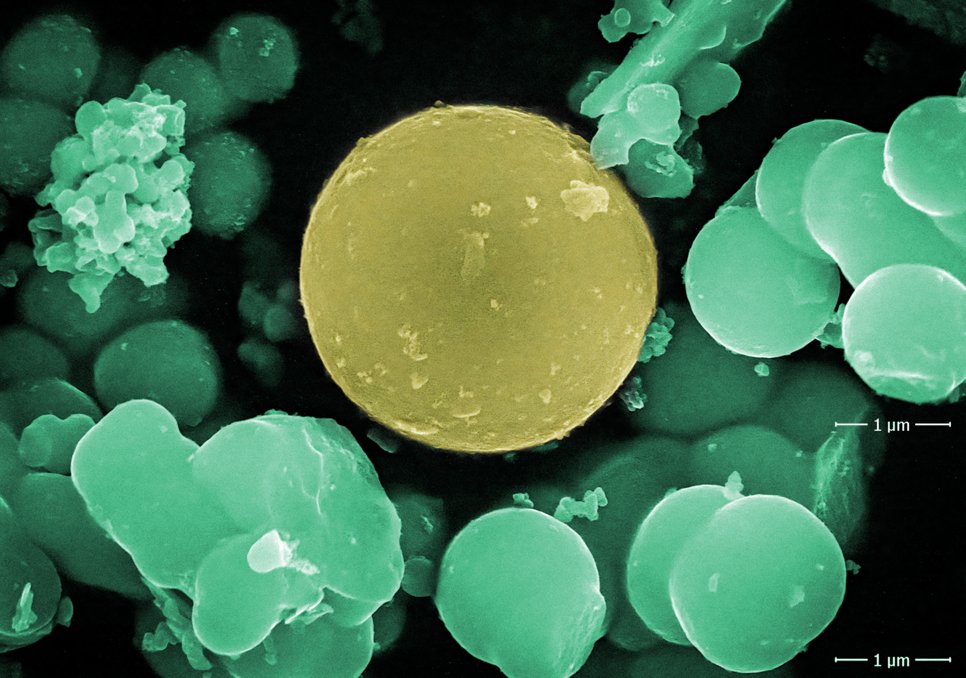
Self-healing organic coatings prevent corrosion in steel. The addition of inorganic or organic fillers can further enhance the corrosion resistance. Titanium Dioxide (here coloured yellow) is a versatile inorganic filler with remarkable physicochemical properties.
February - Deformed nanopillar in nanotwinned Cu-Ag alloy
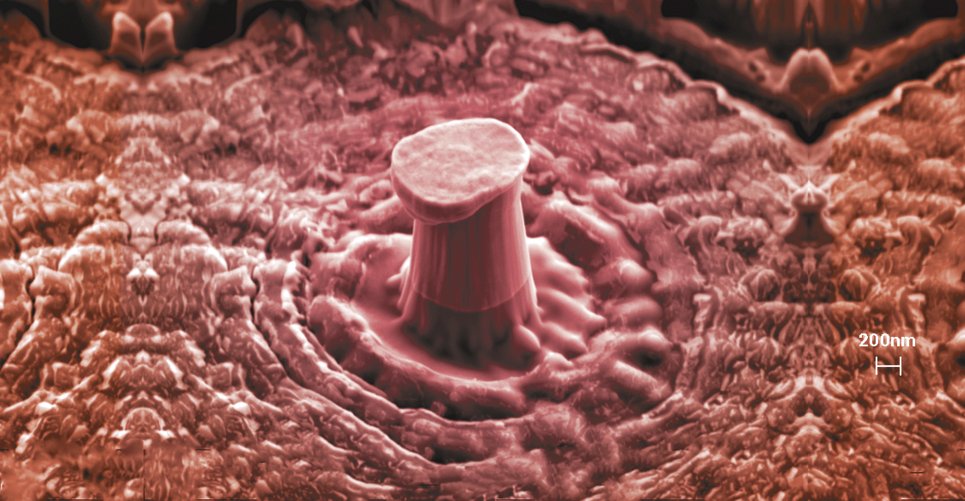
A nanopillar fabricated in a nanocrystalline nanotwinned Cu-Ag alloy deformed to an engineering strain ~20%. This material exhibits remarkable hardness and yield strength, surpassing that of many structural metal alloys.”
March - Variation of crystal orientations in additively manufactured steel
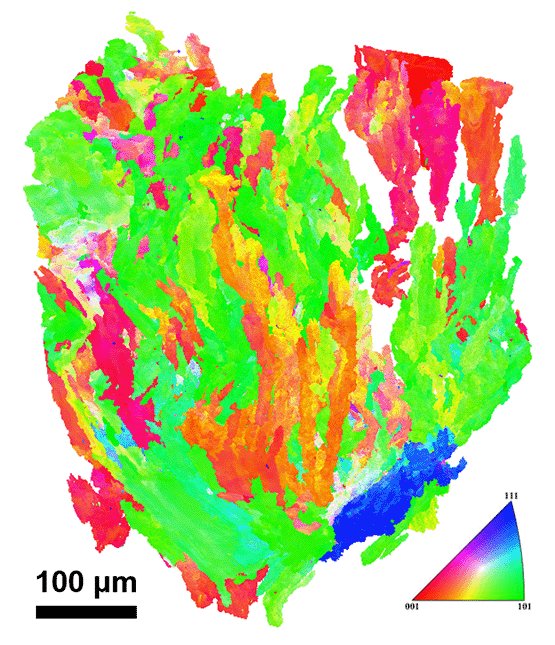
A 3D "grain" of an additively manufactured stainless steel was selected from a large volume 3D electron backscatter diffraction (EBSD) dataset, collected by the in-house built ELAVO system. The 3D analysis enables correlation between orientation variations, texture evolution, and alloys' properties.
April - Cracks during 3D-printing
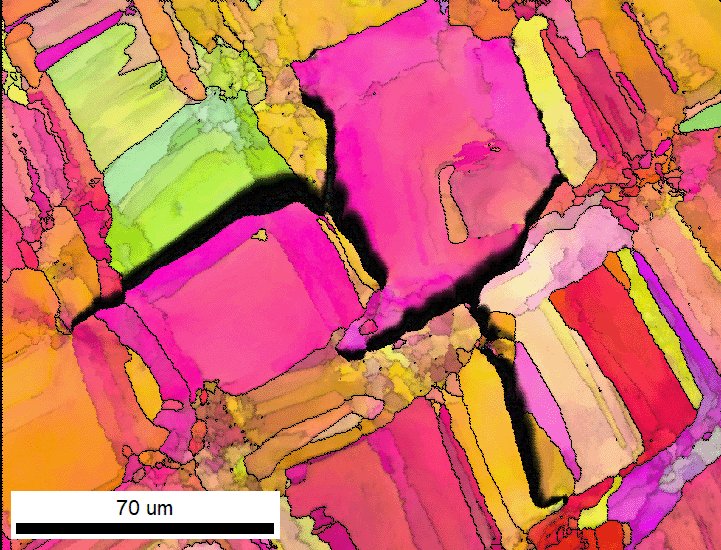
Close-up of a 3D printed metal surface. The dark parts are cracks in the metal, and the different colours represent various grains. The cracks do not appear everywhere; they prefer some parts of the metal over others. We use electron backscatter diffraction to find out which grains are more likely to crack aiming to design crack-resistant materials.
May - Simulating creep behaviour in superalloys
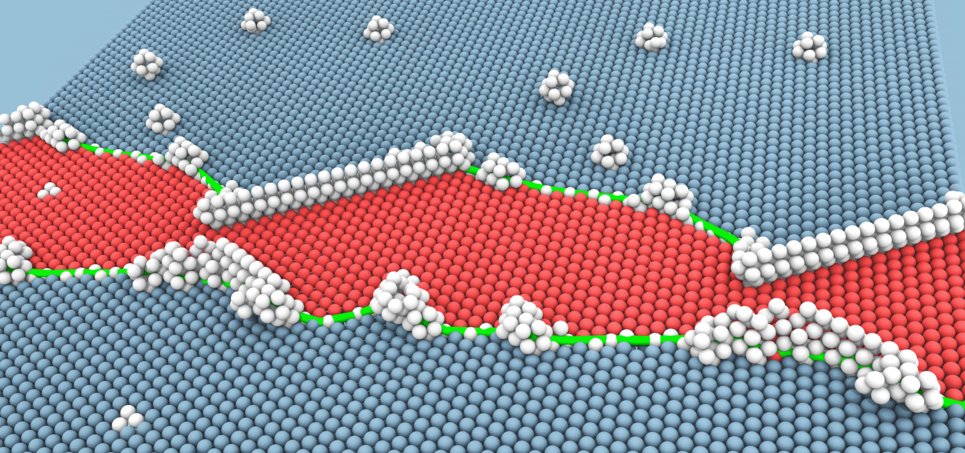
Turbine blades in gas turbines or jet engines need to withstand extreme temperatures and loads. Under these conditions, diffusion-mediated creep is the main failure mode. Developing so-called superalloys with improved creep resistance requires therefore an atomic-scale understanding of dislocation-vacancy interactions.
June - Cross-section of Ordered-FeAl particles
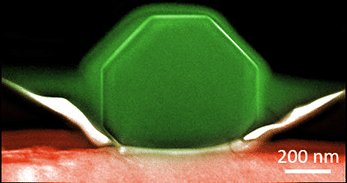
The transmission electron microscopy image shows the cross-section of a single crystal, ordered-FeAl microparticle obtained by dewetting of thin film on sapphire after annealing treatment. This is a novel method to expedite the composition-property characterization - a key step in alloy development.
July - Simulation of ion solvation shells at interfaces
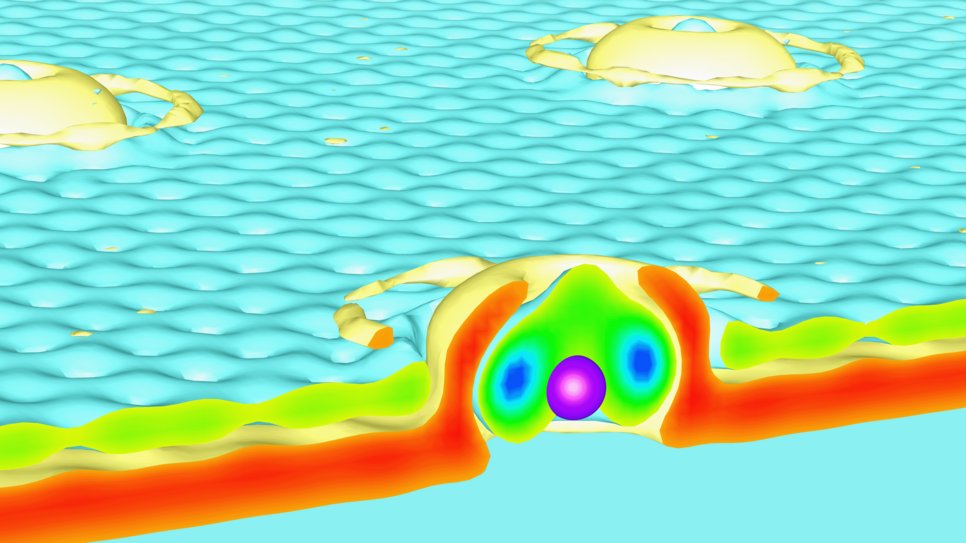
Density profile showing Na+ ions at a solid liquid interface and their respective solvation shells formed by water molecules. Understanding such electric double layer features is essential for controlling, e.g., performance in electrochemical energy storage devices, electro catalysis, but also processes in biology.
August - Magnetic domains in stainless steel

Magnetic domains provide insight into the microstructural evolution of phases. The application of magnetic force microscopy is practical when the phases have a similar crystal structure but different response under a magnetic field. This can be used for an easier identification of phases and the characterization of unique microscale features.
September - Nanostructure of Sm-Co-Zr magnets
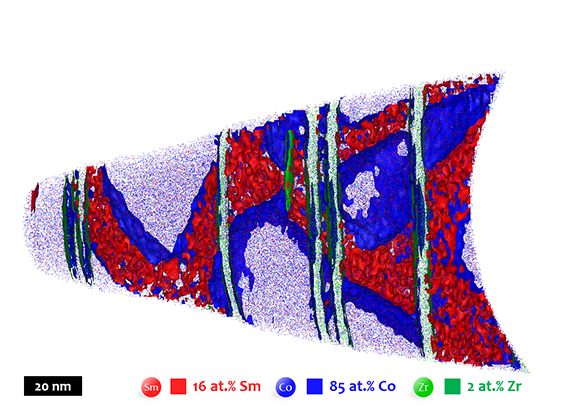
Sm-Co magnets have applications at high temperatures or in corrosive environments, like in motors or off-shore wind-turbines. Their special nanostructure makes them hard magnets. Atom probe tomography revealed Zr-rich platelets (green) and Sm-rich diamond-like cell walls (red). These structures affect the magnetic properties.
October - Encapsulating liquids in microvessels
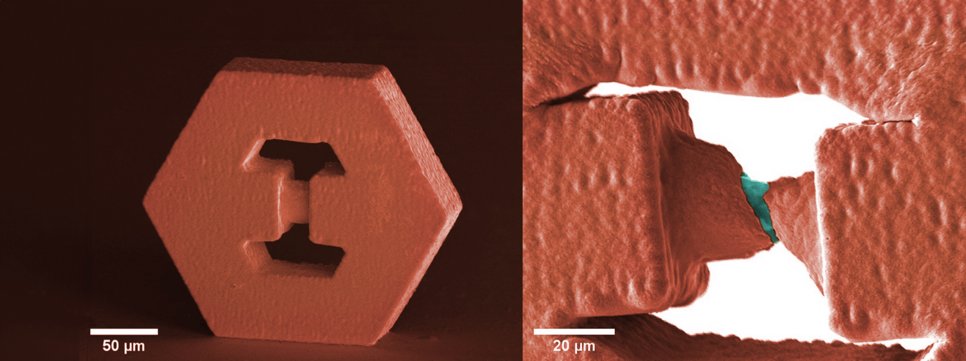
A metallic push-to-pull microarchitecture, which contains nano-liters of liquid in its gauge section, created using micro-additive manufacturing. Upon compressing this structure at cryogenic temperature, the outer metal of the gauge section breaks, allowing us to view the encapsulated ice within. This method of encapsulating liquids can be used for temperature sensing, damage sensing, drug delivery, etc.
November - Core shell nanoparticle in 3D printed alloy
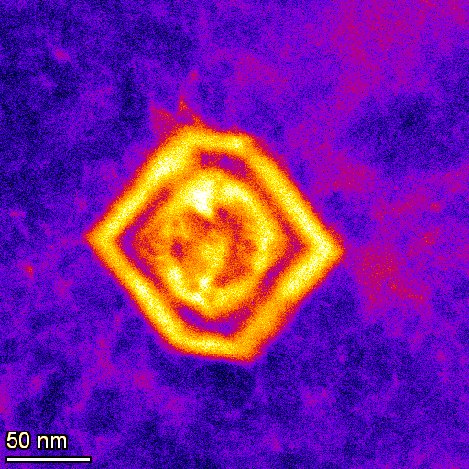
Electron microscopy image of a nanoparticle in the interior of a metal that has been printed using additive manufacturing. This nanoparticle contains a titanium oxide core surrounded by a hard titanium nitride shell. Such nanoparticles increase the strength of metals.
December - Acoustics of a propagating crack

Atomistic simulation of sound waves emitted by a propagating crack. The atoms are coloured according to their velocity. Correctly modelling crack dynamics is crucial to develop strategies for protecting critical parts of components from fracturing.











